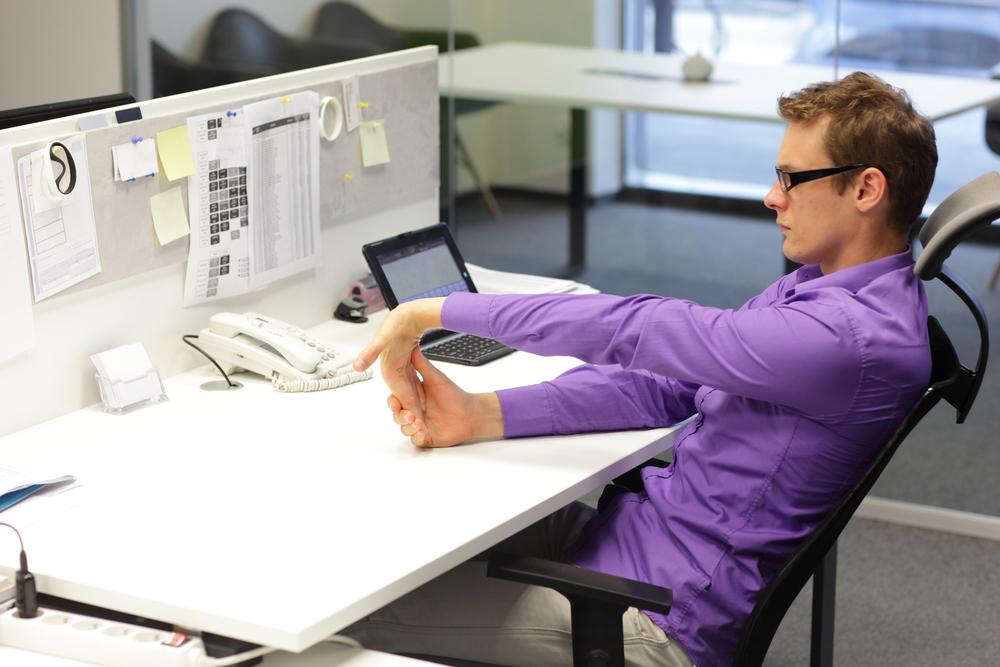The Anti-Office Workout
SITTING for eight hours a day is tough on the body. Exercises will help.
If you’re regularly stuck in front of a computer or behind the wheel of a car for long periods of time, you desperately need this workout.
1. Deep squats
At university I was taught to only get people to squat down until their thighs reached horizontal. This was thought to be safer for the knees. But if you observe young children and people in third world countries, you’ll see they have the ability to squat all the way down.

Stand with feet shoulder-width apart and hold your torso upright. Squat as though sitting on a chair, keeping your heels grounded throughout. Go as low as you can, pain-free, or until your calf muscles touch your hamstrings. Keep your feet facing forward and your knees tracking along your second toe throughout.
2. Walking lunges
Lunges closely mimic normal running and walking, so they strengthen these two important movements. They also work each leg independently, ensuring that the weaker leg isn’t forgotten.
Stand with your feet shoulder-width apart. Imagine you’re standing on train tracks. Stride forward with your left foot along the left train track. Land lightly. Once your left foot lands on the ground, allow your right knee to sink towards the ground. The knee should descend to a point a few centimeters off the ground. Now push off, swing your right leg past your left and land it out in front, ready for another lunge. Don’t allow your front knee to pass over your front toe and try to get into a rhythm.
3. Bend and twists
The body’s two weakest and most injury-prone movements are bending and twisting. This exercise, if done properly, will strengthen these two risky movements and keep your body strong and safe.
Stand tall, holding a light weight or ball in your hands. Lengthen your spine and lightly brace your core. Keeping your gaze up and on the horizon, sweep the weight down laterally so it finishes outside your calf muscle. As you do this movement, stay soft through your knees and stick your backside out to take the load off your spine. Repeat on the other side. If you’ve had a history of back pain, try this without a weight first.
We’re designed to be upright, mobile creatures and this routine will remind your body of that.




